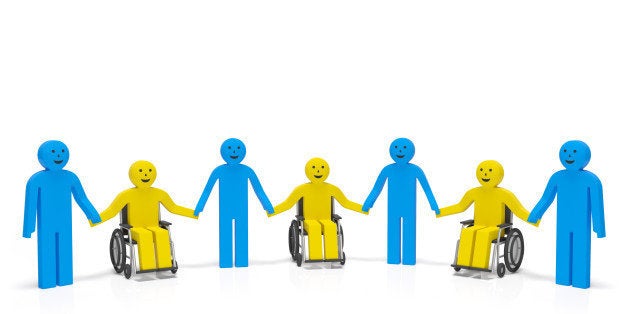
Last month Lego announced that it would release its first-ever Minifigure in a wheelchair. "This is more than just about sales figures or disability access, it's about changing cultural perceptions. It's about brands such as Lego using their vast power of influence to positive effect," wrote Rebecca Atkinson, co-founder of the #ToyLikeMe campaign that had petitioned the company to include figures with disabilities.
Childhood provides a crucial window for changing cultural perceptions of disability. It is obviously beneficial to children who are disabled or have a disabled family member to be in an atmosphere where their differences are understood as a valued form of diversity, rather than a source of discomfort or fear. But it is also beneficial for children who have no prior experience with disability, since disability literacy will be essential to the educational and work environments of the future.
Literacy is about more than "awareness," the term most commonly associated with positive attitudes toward people with disabilities. Literacy means not just knowledge, but fluency and comfort with those whose bodies and minds are different from the norm.
Thanks to the Individuals with Disabilities Education Act, children with disabilities are being included, whenever possible, in classrooms with typical peers who must learn to respect and welcome them. Teaching disability literacy is about more than making our kids nicer, more considerate people. In the quarter-century since the passage of the Americans with Disabilities Act, people with disabilities have become increasingly visible in all facets of life, including the workplace. Big companies like Microsoft, Vodaphone, and SAP have recently launched programs to include employees with autism. Disability literacy is also about preparing children to navigate a new and more diverse workforce.
But Legos and specialized dolls are expensive and may be hard to find. Encouraging disability literacy does not need to be costly or difficult. It can be built into a child's daily routines in the same way we build facility with words and numbers. To get started, here's a list of completely free, everyday activities to promote understanding, comfort, and respect toward people with disabilities.
1.Draw attention to how curb cuts, now a mandated feature of every public street crossing, make sidewalks accessible to wheelchair users.
2.Textured ramps that alert blind walkers of an intersection provide another learning opportunity while waiting to cross the street.
3.A third feature of many more modern pedestrian crossings is chirping or talking traffic lights that also assist blind people to safely cross the street.
4.Newer busses have many opportunities for disability literacy. Kneeling busses help people who have difficulty lifting their legs, while ramps provide access to wheelchair users.
5.Once on the bus, practice reading by reviewing signs that reserve certain spaces for wheelchair users and other people with disabilities.
6.Elevators provide a number of features for blind and deaf passengers. Explain that braille is a reading system used by blind people and have your child feel the braille numbers. You might also discuss how visual and recorded cues enable people with hearing or visual impairments to use elevators.
7.Ramps are an obvious accommodation much beloved by children at play. Invite them to think about how they provide an alternative to stairs that is enabling to people in wheelchairs. Point out places where stairs obstruct access for wheelchair users.
8.Most children are drawn to the bigger and comfier adaptive swings that are a feature of newer playgrounds. Teach them that those swings are for children with disabilities whose bodies need the extra support. Don't hog the adaptive swing: you can teach respectful turn-taking by making your physically typical child give up the adaptive swing if a child with disabilities is waiting to use it.
9.Teach your child never to use the R-word (retarded). Once a medical term, "retarded" is now considered an insult that should be treated like racial and gender slurs. The preferred term is "intellectual disability." Avoid other words that are insulting to people with disabilities like "spaz" or "moron."
10.Don't teach your child that staring is rude by telling them not to look at people with disabilities. We are all drawn to look at the unfamiliar, which is not the same as gawking. By immediately forcing your child to avert his or her eyes, you teach them that people with disabilities should be treated as if they are invisible.
11.Most importantly, have fun exploring and discussing disability literacy. The goal of the Lego minifigure is to help children recognize disability as a form of human variation rather than something to be feared, pitied, or avoided. Learning about the environments that support and enable people with disabilities is an important part of that education.